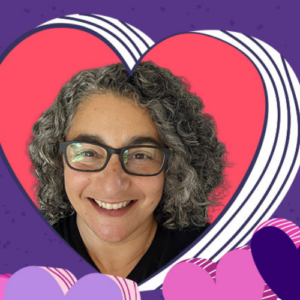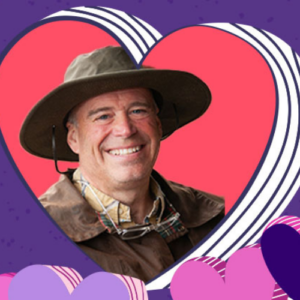For Valentine’s Day, UW News asked 12 University of Washington researchers to share their love stories: What made them decide to pursue their career paths? Featured among the 12 storytellers were UW Biology Professors Jennifer Nemhauser and Adam Summers.
Excerpted from UW News:
 Jennifer Nemhauser, Professor, Department of Biology
Jennifer Nemhauser, Professor, Department of Biology
What do you study at the UW?
We use plant, yeast and human cells to understand and engineer the molecular interactions that allow organisms to process information during development and stress responses.
What made you fall in love with your research area?
When I was a little girl, I attended a Montessori school in Los Angeles. This was the 1970s, and the teachers embraced the philosophy of letting a child’s interest direct their learning. I had one teacher that I really bonded with, named Dr. Pillai. He introduced me to the process of science research, rewarding my seemingly insatiable curiosity with thoughtful responses and sharing just the right book or model or experiment to help me dig deeper into any topic that caught my interest. He made me feel like asking a million questions was a wonderful quality (something not everyone agreed with, then or now!).
The pure joy of learning about the natural world through experimentation struck a deep chord. While the road was quite twisty between those early years and my decision to pursue science as a career, I am sure that I would not be here today without that early encouragement.
What advice would you give to your younger self?
Be nicer to your dad when he is helping you with your math homework!
 Adam Summers, Professor, Department of Biology and School of Aquatic and Fishery Sciences
Adam Summers, Professor, Department of Biology and School of Aquatic and Fishery Sciences
What do you study at the UW?
I am a natural historian who applies physics, math and engineering concepts to living systems to understand how they work. My research is driven by both the evolutionary implications of function and the possibility of bio-inspired design.
What made you fall in love with your research area?
From my earliest childhood I spent three seasons in downtown Manhattan and summer in the north woods of Ontario, Canada. The contrast between the most urban environment and a place without utilities or indoor plumbing was formative. Fishes, whether in tanks, on lines, or through my SCUBA mask, were my constant and most interesting companions. No detail was too obscure, and no species too drab to escape my attention.
I left fish behind when I got to college. Instead, it was a constant joy of mathematics and engineering, with a liberal arts sprinkling of art history, economics and German. After college I tried many things: I started a business, taught in the NYC public school system and attempted a career in photography. But I wasn’t willing to persist when things were hard or no fun. Then I went to Australia to become a SCUBA instructor. There I met my first biologist. I was smitten with the idea of making a living trying to understand animals.
On my return to New York, I immersed myself in biology, particularly the natural history of fishes, reptiles and amphibians. Spending hours in the field closely observing animals and their environment was one avenue of inspiration. The other was investigating animals’ shape, or morphology, with an electron microscope. The link between form and function was how my weeks passed — looking at microstructure, then wading in temporary ponds for larval salamanders. I fell completely in love with both areas and have made my career at that interface.
What advice would you give to your younger self?
Treasure your mentors in the moment. They are gone too soon and you will never feel like you made it clear enough how much they affected you and your career.

